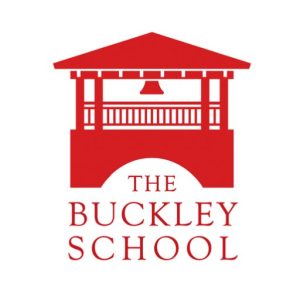How Top Schools are Responding to the COVID-19 Outbreak
LightWerks interviews Jose Tagle, Director of Technology at The Buckley School, about his rapid response to COVID-19
Founded in 1933, The Buckley School is the oldest K-12 independent co-educational day school in Los Angeles. An elite college preparatory school, Buckley enrolls 830 students on its 18-acre campus in Sherman Oaks, California.
LightWerks has a longstanding relationship with Buckley, and has partnered with the institution on several audio visual projects. These include the integration of advanced technology in new buildings to support academics, including STEM classrooms, as well as the performing arts, including dance and music rehearsal spaces, a black-box theatre, and a performance and community gathering space.

As the COVID-19 outbreak created a disruption and complete transformation to our education systems, The Buckley School maintained its position on the forefront of innovation, evolution, and leadership in technology integration. Jose Tagle, Buckley’s Director of Technology, was able to rapidly respond to an immediate need for continued, quality education amidst the school’s unanticipated physical closure. LightWerks interviewed Tagle to learn more about his strategic plan to successfully transition Buckley into an online learning environment.
Over two months ago, the novel coronavirus and the resulting COVID-19 disease introduced the challenge of maintaining continuity of teaching and learning while facing the threat of an extended school closure. For The Buckley School, the immediate temptation was to conduct school remotely using online resources to connect students and teachers. There were benefits to this approach, such as continuing the school year without extensive interruptions and multi-week school closures. However, creating an effective remote learning solution was easier said than done.
Moving Buckley’s systems to a remote learning environment wasn’t just a technical issue. It continues to be a pedagogical and instructional challenge. Technology is the means for delivery. A successful effort to move Buckley outside the “brick and mortar” classroom required a cross-collaboration between instructional, content, and technology teams. Taking students and teachers out of the classroom was a pedagogical transformation that required rapid mobilization across Buckley to transform delivery.
After collaborating with the head of school and divisional heads, and before pulling the trigger on a technology initiative to move instruction to an online environment, a few key questions were considered which were guided by a rems.ed.gov article:
- What technologies do we already have available?
- How can we assess teacher and student readiness and preparation?
- What training materials will we need to create? And for what audiences?
- Which individuals will be involved in the training and tutoring process on technologies and systems selected?
- What role does cost play in determining short- and long-term solutions?
The first question served as the most helpful starting point. It provided a K-12 analysis of the hardware, software and systems we currently used as well as our shortcomings. The list identified devices for employees and students, remote access to all critical data, email, applications, systems and subscriptions, cybersecurity awareness, as well as a review of current policies and processes, to name a few. Some of the existing hardware Buckley identified included laptops for all employees, a bring-your-own-laptop (BYOL) program for grades 7-12, as well as existing connectivity to our data resources. Some of the existing software and systems included a review of our current cybersecurity software, as well as our learning management system (LMS) for middle and upper school divisions. We were able to identify the need for home devices, software and an asynchronous platform for K-6 grades. We were also left with the question “What synchronous learning platform will Buckley rely on?”.
There was a sense of accomplishment in identifying technologies we had and did not have, and finding technical solutions to fill the gaps. The next step in our process was assessing teacher and student readiness and preparation. Which also prompted the question, “Does our community have the required infrastructure at home to support remote learning?”.
Buckley assessed the readiness and preparation of teachers by analyzing two concepts: asynchronous and synchronous learning. Our middle and upper school divisions were familiar with the concept of asynchronous learning via our current LMS. Introducing this concept to our lower school division was an immediate goal. Given the great reviews Seesaw received through listservs, its intuitiveness, and the current usage from a few lower school teachers and parents, the decision was made to promote Seesaw as the lower school asynchronous platform.
Our next goal was to identify a synchronous learning platform. We had very little experience with this. Teaching online requires specialized skill sets including the understanding of how to conduct classes in a virtual environment, knowing when and how to use video conferencing, share content, respond to students’ submissions and more. After considering many video conferencing platforms such as Zoom Meetings, Google Meets, Microsoft Teams, Adobe Connect, BlueJeans, to name a few, it was clear via listservs that Zoom Meetings, Google Meets and Microsoft Teams were the preferred educational platforms. Additionally, all three platforms provided a way for teachers to authenticate with their current school credentials. After a small team spent two consecutive days exploring the platforms, Zoom’s features gained a big win. Our teachers started from the basics, learning the selected platforms as well as how to manage an online classroom within a matter of days; a very compressed time frame. We also assessed the readiness of our student body. We realized that a one-size-fits-all environment was not appropriate for all students and all grade levels. While asynchronous learning is often quite familiar for middle and upper school grades, we had to consider the challenges of delivering kindergarten or first grade instruction online. Our lower school division introduced Seesaw first, with an introduction of Zoom Meetings in the weeks to come.
Does our community have the required infrastructure at home to support learning?
It is essential that technology does not drive instruction and pedagogy, but there were some factors we considered to make this approach equitable and successful for students and teachers alike. We immediately surveyed both teachers and families. Given the existing 7-12 grade level BYOL program, one of the goals was to determine if K-6 grade level families were equipped with an appropriate and existing device at home. We wanted to ensure Buckley had an adequate supply of devices to distribute to avoid creating an equity issue. Another goal was to identify who did not have access to quality network access & connectivity, and provide help to those in need. It’s hard to believe that training and surveying took shape in a matter of days. It was immediately followed by a hands-on, low-pressure practice week for both teachers and students. The goal was to test the concept of remote learning and iron out the technical and scheduling details.
The expression “building the plane as you fly” has become increasingly familiar across education. More so in the recent weeks. But building something together requires a manual with a specific set of instructions. What training materials will Buckley need to create for a successful move to remote learning? The task of creating an informational hub was two-fold; a technical and pedagogical one. The first task was creating an online portal with all the technical information an employee may need to work from home. This included an off-campus checklist that covered access to email, Virtual Private Networks (VPNs), home and shared drives, software, and cybersecurity awareness. A dedicated technical page with how-to guides, troubleshooting tips, cheat sheets, frequently asked questions (FAQ), and training videos for the selected platforms was crucial. These resources were created and geared for teachers, students and parents/guardians. Beyond the technical resources, our teachers required additional guidance. The school also put together a general resource page with updates, links and additional resources for each division that included schedules, behavior expectations, support services, online subscriptions and tips.
The winning factor was having these unified resources available to the school’s technology team. Making sure the technology team was informed and able to physically and virtually support the community was key. The team’s role was to effectively triage and determine if an incoming request was technical or instructional and route it to the correct member. Together with the academic team, we formulated a plan for training. Little to no training was required to get our middle and upper school faculty trained on our existing LMS. Our educational technology coordinators and the help desk team were tasked to train teachers on the use of Seesaw and Zoom Meetings. This made it possible to focus more resources in implementing and updating the informational hub. This involvement continues as teachers become comfortable expanding their technical skill set and seeking additional online tools.
The short-term cost for solutions was relatively low. As mentioned, Buckley had existing software and hardware that made working from home easier. In some cases, teachers were allowed to borrow peripherals, such as keyboards, mice, and monitor displays to enhance their home working conditions. Although many teachers had existing software on their laptops, Buckley incurred a licensing cost to properly manage Zoom Meetings for the school. Thanks to the rapid movement by companies to support schools, many software and subscriptions offered free trials for the weeks to come. Buckley took advantage of basic licensing for Zoom Meetings, Seesaw, and other online educational subscriptions.
Moving forward, we must review and determine the long-term cost impact. Nobody wants to be the first to reopen, nor the first to say they’re going remote until 2021 or later. We can’t just flip a switch and go from “everyone shelter at home” to “everybody go back to what you were doing a couple of weeks ago”. By now, many school leaders have realized that they can’t just open school doors and let everyone rush back onto campus like excited Black Friday shoppers. If students are able to walk onto campus in the fall, they might not recognize their school. Auditoriums and large meeting spaces on campus may be converted into modified classrooms, which would allow students to avoid cramped classrooms and spread out. Classrooms could require the need for devices such as cameras and microphones to support a hybrid learning environment as teachers and families continue to self-quarantine. Schools should also be looking at possible ways to incorporate virtual reality (VR) and augmented reality (AR) technologies. The question remains whether companies will continue to offer free software subscriptions beyond this school year. What other enhancements or modifications do schools need to implement to further strengthen their cyber security initiative? Are users and data protected with multi-factor authentication, web filtering, continued end-user training, up-to-date anti-virus agents, backup solutions, and ongoing operating system and software patching? Are schools updating their disaster recovery plans to include pandemics? Are schools planning for additional faculty training during the summer? There are many long-term cost factors to consider, which is why schools need to begin planning immediately. Summer is around the corner, an ideal time frame to implement new initiatives.
In closing, I’d like to take this opportunity to praise the entire Buckley community. From the administration and technology team, to our amazing teachers that continue to endure countless hours reinventing learning opportunities for our students. My appreciation goes out to our student and parent body for their continued understanding and flexibility. I’d like to also acknowledge the individuals that are also parents with now homebound children. Some of which have a spouse in an essential worker role. This will require flexible work schedules so they can teach and manage interruptions in their households. Many thanks to all my resources such as NAIS, ATLIS, and all my independent school counterparts that kept information flowing through listservs such as CAIS, ISED-L and INTELA.
We are in this together! I appreciate you all.
Please note: The tools and resources identified in this article are not intended as endorsements, and are merely offered as examples that you may take into account in your own continuity of learning planning efforts.


